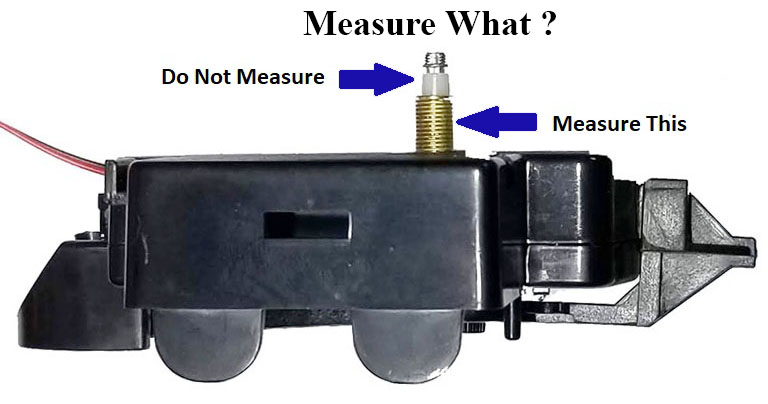How do I measure the Post of a Quartz Clock Movement?
- Knowledge Base
- Quartz clock movement measuring
Article sections
Quartz clock movement measuring
Please select the post length when ordering a new quartz clock movement. Of course, when doing quartz clock movement measuring, remember the post will need to be able to go through the thickness of the dial face. Also remember that the dial may or may not have a wood backing to it. With a wood backing the clock dial or face would be thicker and thus would need a longer post. Clockworks offers multiple post lengths on quartz clock movements for this reason. In other words, the post has to be long enough to go through whatever thickness we are calling the dial.

What to measure


offers multiple post lengths for quartz movements. When completing a quartz clock movement measurement, you will need to measure the post on the old movement. This is so it can match up with the new quartz movement. To clarify, the post is the part that goes through the dial (face) and mounts from the front and what is in a quartz clock movement measurement. This applies to all Clockworks quartz movements, including chiming quartz, and time only quartz movements.
Length depends on dial thickness
When working on a quartz clock movement measurement the post has to be long enough to go through whatever thickness that the clock face/dial, might be. The length of the threaded portion of the post/shaft, is the measurement needed. The threaded shaft needs to go through the dial/face of the clock from the back to the front. It needs to be long enough for a small hex nut to screw onto it. It can’t be too long or the hands will not move correctly. Clockworks has a variety of quartz clock movement lengths to accommodate a variety of different materials since some are wood and some are metal and some are plastic, etc.
The content of this website is copyright by Clockworks and written by James Stoudenmire in year 2020
Last Updated: 2 months ago in
Related Articles
Updated on: 05/08/2022
Thank you!
